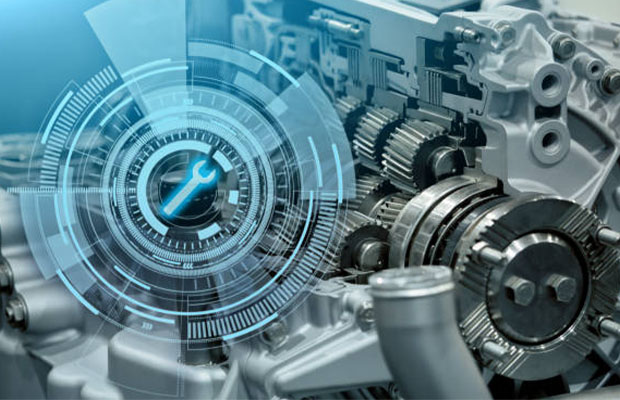The introduction of the automatic transmission did this by offering a “no-muss, no-fuss” form of shifting. Only manual transmissions, which were conceptually similar to today’s stick-shift cars, were available in the earliest automobiles.
Do you know when did automatic transmissions become popular? The majority of people opted for the simple route when getting behind the wheel starting in the late 1980s when automatic transmissions started to become more common in the US. The majority of Americans, excluding pure auto enthusiasts, will choose an automatic vehicle as a result of everything mentioned above.
Learn more about the history and development of automatic transmissions by reading on.
Table of Contents
Brief History Of Automatic Transmission
It hasn’t been easy transitioning from manual to automatic parking. Given that automatic transmissions are used in the majority of modern vehicles, learning more about their past would be fascinating.
Let’s explore the history of automatic transmission from the beginning, shall we?
1. The First Automatic Transmissions
A Canadian steam engineer named Alfred Horner Munro created the first automatic transmission in 1921. Munro’s device lacked power and was never commercially successful because it was built to use compressed air rather than hydraulic fluid. General Motors then developed the first automatic transmission using hydraulic fluid in the 1930’s, and introduced the “Hydra-Matic” transmission in 1940.
A true automatic transmission was first used in a 1948 Oldsmobile model. The Hyrda-Matic, developed by GM engineer, Earl Thompson, was advertised as: “The biggest improvement since the self-starter.” Through 1955, the Hydra-Matic underwent continuous upgrades and improvements, but its fundamental design and operating theory remained the same. The Jetaway was General Motors’ replacement for the Hydra-Matic in 1956. The “Jet” was not a roaring success and quickly gave way to the Nitro Hydra-Matic in 1969.

2. The Improvement
Additionally, improvements in the automatic gearbox and fluid coupling technology allowed General Motors to launch the first widely available automatic transmission in 1939. The idea was well received and recognized. Pontiac and Cadillac also embraced the concept, which gave it a boost.
Bentley, Rolls Royce, Hudson, and Nash, among other enormous manufacturers, followed suit. The use of Hydra-matic in military vehicles that participated in World War II is an intriguing fact to note.
3. The Torque Converter
A torque converter became a recognized device in 1948 and is used in automatic transmissions. The drive from the engine is transferred to the wheels of the vehicle by this device. The ability of this device to multiply torque, which the fluid coupling was unable to do, is its best feature.
Manufacturers like Packard, Chevrolet, BorgWarner, Ford, and General Motors adopted the torque converter technology after setting the precedent. Automatic transmissions gained more recognition during the period of 1954–1961.
4. Overdrive Equipped Transmission
Overdrive-equipped automatic transmissions were first introduced to the automatic transmission at the beginning of the 1980s. Four or even more forward speeds were available with the new invention. The six-speed transmission was first offered by BMW in 2002.
Mercedes debuted a seven-speed transmission in 2003, and Toyota debuted an eight-speed in 2007. These innovations came as the level of competition increased. The first nine-speed transmission was invented by Jeep Cherokee in 2014. The inventions that followed helped automatic transmissions gain popularity and widespread usage.
5. The Transmission Control Unit
The transmission control unit is the automatic transmission’s best technological advancement. To change gears, the device relies on data from the engine control unit and information from the vehicle’s sensors. No matter the task at hand—performance, fuel economy, or shifting effectiveness—TCU excels in each area.
The first design gained popularity in the 1980s, and since then, advancements have only been for the better. The majority of automatic transmission vehicles are based on TCU, which has been transforming amateur drivers into experts. To learn more about transmission control units, look through industry knowledge.
Read More: How To Convert An Automatic To Manual Transmission?
Driving Is A Chore!
Driving is frequently considered to be a chore rather than enjoyable in America. Most Americans use their cars as their only form of transportation, similar to how New Yorkers depend on the subway and bus networks. Constantly changing gears to stop and go is annoying if you live in a city where getting stuck in traffic is a daily occurrence. When used frequently, automatic cars are simpler to operate if you live in a smaller town or city where you make more short trips or multiple stops. People use cruise control in automatic vehicles on longer journeys. It is occasionally possible, but using it in a manual car is more difficult. Due to the high cost of gas and for convenience, people traveling long distances in Europe are more likely to use the extensive rail system or to fly.
Make sure you don’t get a manual transmission vehicle if you’re renting a car outside of the US and would prefer one with an automatic transmission. When choosing a car with SIXT, you can quickly filter by transmission type at the top of the page. By doing this, you can avoid being shocked when you go to pick up the rental car and find out you can’t drive it!
Read More: Smart Parking Garage



